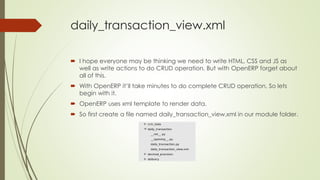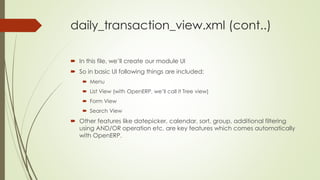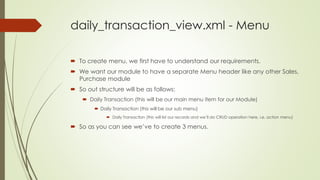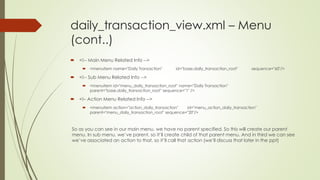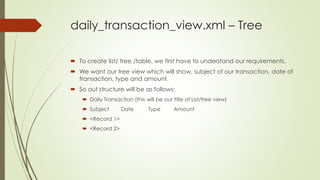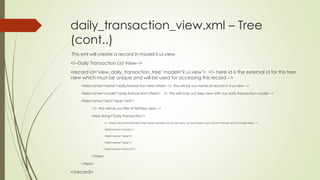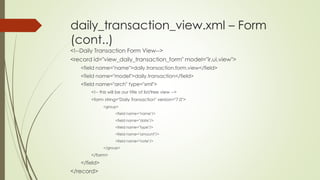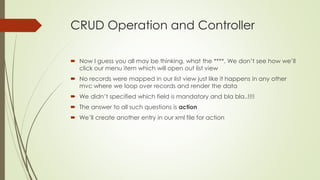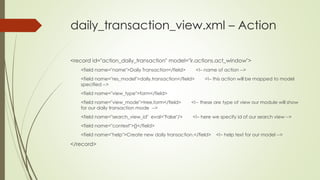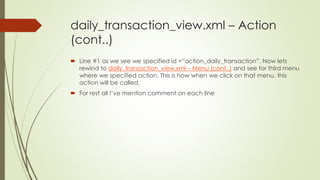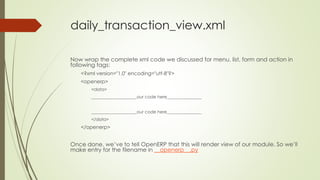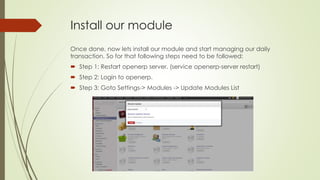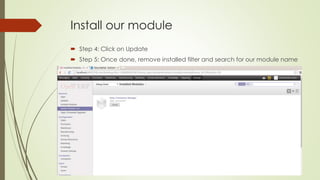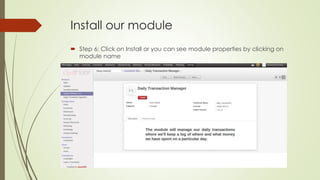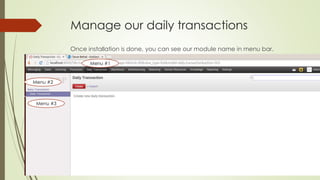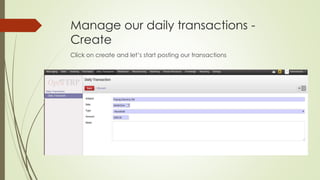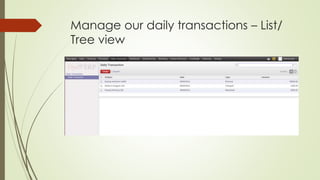The document discusses creating a new module in Odoo (OpenERP) to manage daily transactions. It describes modeling a transaction with fields for subject, date, amount, notes, and type. It covers creating the necessary files and code for the module, including the __init__.py, __openerp__.py, daily_transaction.py, and daily_transaction_view.xml files. The daily_transaction.py file contains the model definition and fields. The view XML file defines the menu items, tree view to show transactions, form view, and an action to link everything together for CRUD operations.
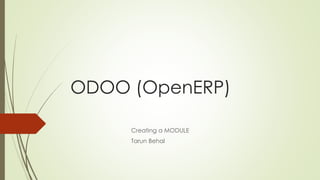

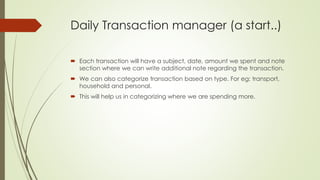

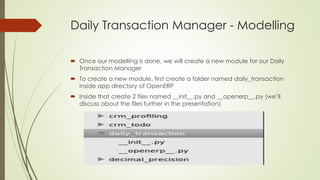
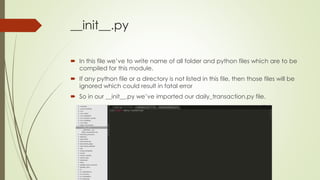
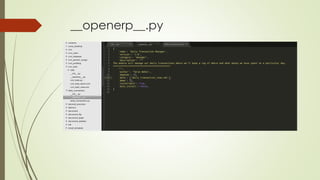
![__openerp__.py (cont..)
In this file, we’ll write description of our module and its properties. Lets
discuss each field in this file:
Name, description, version, author and category are used to describe our
module and its version. So each time we make any changes we’ll increase the
version number.
Depends : Here we specify if our module depends on other module. For eg: if we
are creating an extension to CRM module we’ll specify ‘depends: [‘crm’]’
Data: Here we specify all xml files related to our project. We’ll discuss about xml in
later part of presentation
Installable & Auto-install : I guess the name is enough to explain these properties.](https://image.slidesharecdn.com/odooopenerp-creatingamodule-140801063134-phpapp02/85/Odoo-OpenERP-Creating-a-module-8-320.jpg)


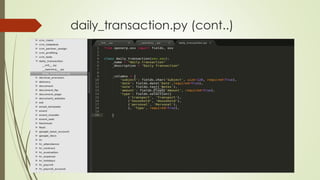

![daily_transaction.py (cont..)
Line #10 to #20 will tell you about power of OpenERP ORM.
This code is enough to create model of our daily_transaction in the
database as well in user interface and guide us which particular field is
mandatory.
‘required=True’ is for adding mandatory attribute to our column.
Other attribute which could be used here are invisible, readonly etc.
We can use these attributes as dependent on other field values. For eg: we
can make notes field mandatory only if type is household.
note: fields.text(‘Notes’, type = {‘household’: [{‘required’:True}]}),
Now our modelling part is done, lets move ahead to UI part now.](https://image.slidesharecdn.com/odooopenerp-creatingamodule-140801063134-phpapp02/85/Odoo-OpenERP-Creating-a-module-13-320.jpg)
